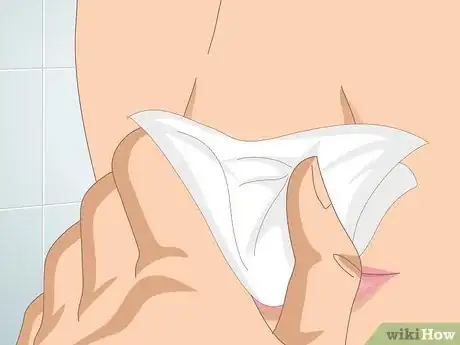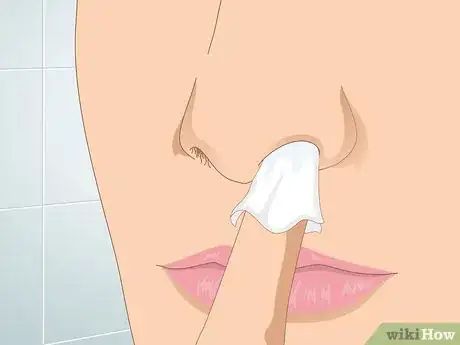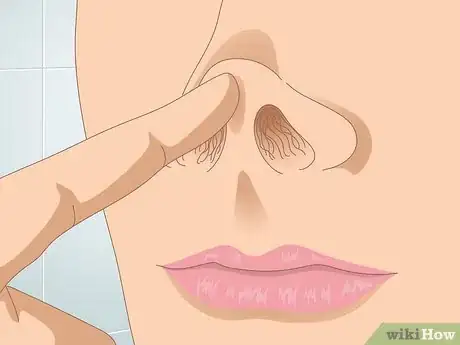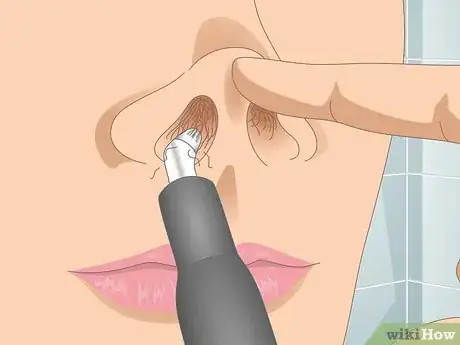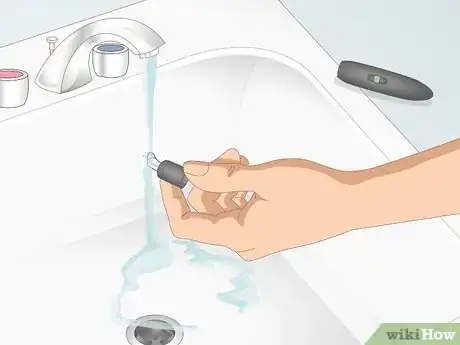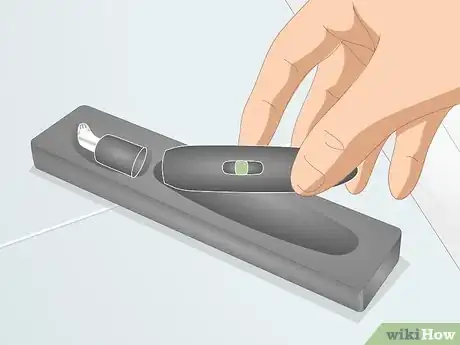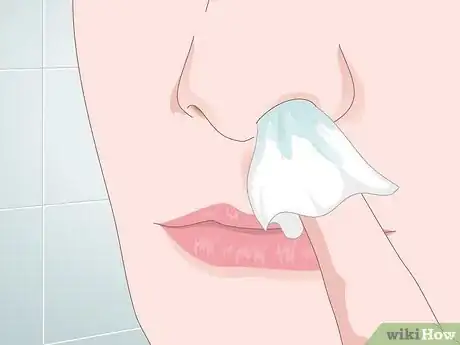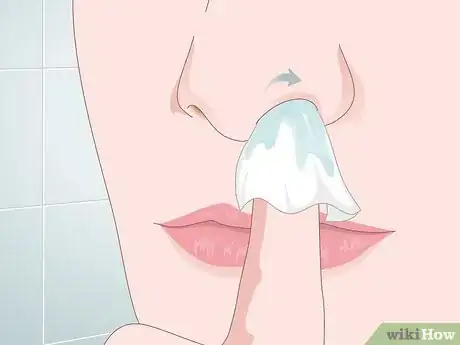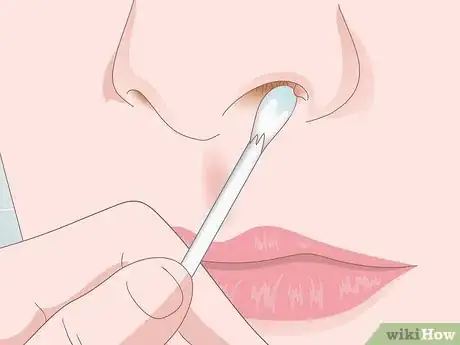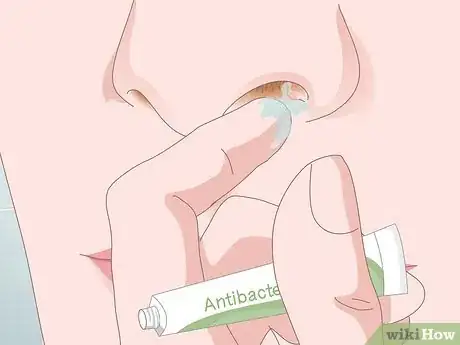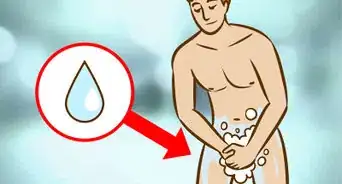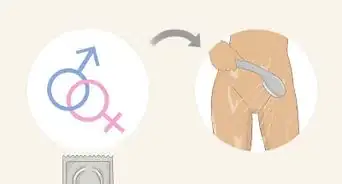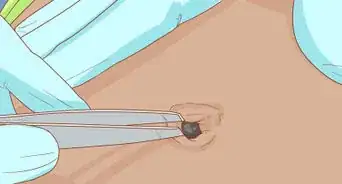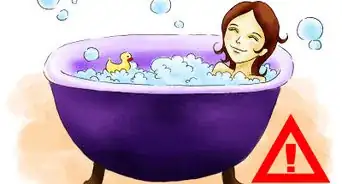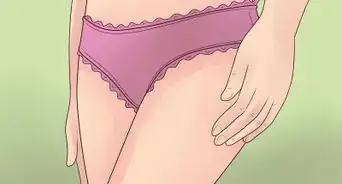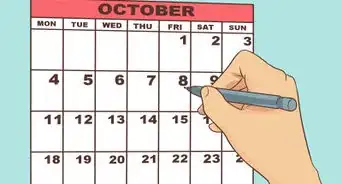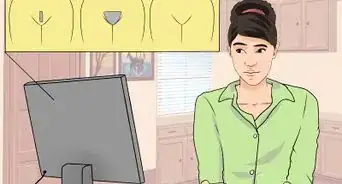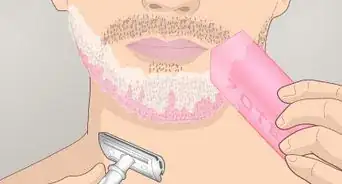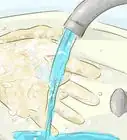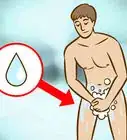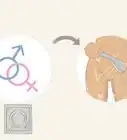This article was co-authored by Mark LoBiondo. Mark LoBiondo is a Licensed Cosmetologist and the Owner of Markdaniel Barbershop. With more than nine years of experience, Mark specializes in providing barber services reminiscent of classic neighborhood barbershop experiences. Markdaniel Barbershop has been featured in Jersey's Best. Mark and his team all hold Barber or Cosmetology Licenses in New Jersey.
This article has been viewed 42,545 times.
When you want to get rid of nose hair, using an electric nose trimmer is an easy, pain-free option. It’s much faster and safer than using scissors or other methods to trim your nose hair. Keep in mind that nose hair is an important part of your immune system that filters out dust and bacteria, so make sure you never overtrim. Though using an electric trimmer is very safe compared to other methods, it’s still possible for you to end up with ingrown hair follicles or irritated skin inside your nostrils. If you notice any irritating hairs inside your nose after trimming, then make sure to deal with them to relieve the feeling and prevent infection.
Steps
Trimming Nose Hairs
-
1Stand in front of a well-lit mirror. Use the bathroom mirror if there are a lot of lights in the bathroom. Choose another mirror in a brightly-lit room if it’s too hard to see your nose hairs in the bathroom mirror.[1]
- If you have a magnifying mirror, use that. It will make it much easier to see the nose hairs. A normal mirror will work, but you might have to lean really close to see the nose hairs well.
-
2Clean out your nostrils. Blow your nose on a tissue to get rid of any mucus. Wipe around the inside of your nose with a tissue to get rid of any boogers.[2]
- It will be easier to trim your nose hairs if your nose is completely clean. If you are sick or have allergies and are congested, it’s better to wait until a day when your nose is more clear to do the job.
Advertisement -
3Moisten your nose hairs lightly with a wet cloth. Dampen a clean cloth with cool or warm water. Stick your index finger inside the cloth and insert it gently into your nostril to get the nose hairs wet.[3]
- This will help separate your nose hairs and make them easier to trim.
-
4Push up on your nose so it looks like a pig’s nose. Use the index finger of your non-dominant hand to push your nose up and back in the middle. This will open up your nostrils and make it easier to see the hairs inside them.[4]
- Keep in mind that you are only going to be trimming the tips of the hairs, so don’t worry if you can see all the way up inside your nose.
-
5Circle the nose trimmer around inside the entry of 1 nostril to trim the hairs. Turn on your electric nose trimmer and insert it just inside 1 of your nostrils. Gently circle it around, without pushing it any deeper, to trim the tips of the visible nose hair follicles.[5]
- Nose trimmers are built with safety guards to prevent cutting or chafing inside your nose. That being said, avoid pushing the trimmer too hard against the sides of your nostrils just to be extra safe.
Tip: There are also manual nose trimmers available that don’t require any electricity to operate. However, they are not as comfortable to use and often require both hands, making it more difficult to see what you are doing. Another advantage of electric nose trimmers is that many models come with different attachments for trimming other types of body hair.
-
6Avoid trimming beyond the visible hair. There’s no need to push the trimmer all the way inside your nostril to try and trim the hair follicles up inside of it. Your nose hairs serve a purpose and are there to filter out dust and other airborne particles to keep you healthy, so don’t overtrim them.[6]
- You can let go of your nose and look closely to see if there are still nose hairs visible when it is in a normal position. If there aren’t, then you are all done.
-
7Repeat the steps for the other nostril. Push up your nose again when you are happy that the first nostril is trimmed well. Gently circle the trimmer around inside the entry to the second nostril until you have trimmed all the visible tips away.[7]
Cleaning and Storing the Trimmer
-
1Rinse out the hairs from the blades after every use. Remove the blade attachment from the body of the trimmer when you are done using it. Rinse it out under plain running water to wash out any hairs clinging inside the blades.[8]
- You can use a regular trimmer to cut the nose hairs.
- Some nose hair trimmers might not have removable blades. Consult the owner’s manual for specific cleaning instructions to see if it is still ok to rinse the blades out with water.
-
2Spray the blades with a barber’s disinfectant. Hold the spray can so the nozzle is aimed directly inside the blades. Press down the spray nozzle 2-3 times to spray the blades.[9]
- Barber’s disinfectant spray is used by barbers to disinfect and maintain all their equipment like electric clippers. You can get it online or at a barber supply shop.
Tip: In addition to disinfecting the nose trimmer, barber’s disinfectant spray will also prevent it from rusting to keep it in good shape.
-
3Store the nose trimmer in a clean, dry place. Put the trimmer in its case if it has one. Place the trimmer inside a clean, dry cabinet or drawer until the next time you need to use it.
- Make sure the trimmer is totally dry before you store it. Let it air dry completely after rinsing and disinfecting it.
- Some nose trimmers have a storage dock that you can set it in to store it on the counter if you use it regularly.
Dealing with Ingrown Hairs and Irritation
-
1Moisten the inside of your nostril with a warm, damp cloth. Soak a clean cloth under warm or hot running water. Put your index finger inside it, gently insert the finger and cloth inside the irritated nostril, and hold it there for 2-3 minutes.[10]
- This will moisten any dry, irritated skin inside your nose. Add more warm water to the cloth if it feels like it is drying up.
Tip: When you trim your nose hairs, they can become sharp or even ingrown, which leads to irritation inside your nose. Use this method to relieve the irritation, soften the hairs, and prevent infection.
-
2Rub the cloth gently against the irritated spot. Feel around inside your nose with your finger still inside the damp cloth to locate the exact spot where you have an ingrown hair follicle or irritated skin. Rub the moist cloth against it for 30 seconds or so.[11]
- This will help loosen any ingrown hairs from underneath the skin inside your nose.
-
3Disinfect the irritated area with rubbing alcohol or hydrogen peroxide. Soak a cotton swab in rubbing alcohol or hydrogen peroxide. Dab the ingrown hair or other irritated area inside your nose with the cotton swab to disinfect it.
- This will make sure the irritation doesn’t increase due to an infected pore or cut.
-
4Apply a thin layer of antibacterial ointment inside your nose. Wash your hands with soap and water, then put a small dab of antibacterial ointment on the tip of your index finger. Gently rub it around inside your nose to kill bacteria and protect the irritated skin.[12]
- This will also help soften any hairs that are sharp and irritating the inside of your nostril after trimming.
Things You’ll Need
Trimming Nose Hairs
- Electric nose trimmer
- Tissue
- Clean cloth
- Mirror
Cleaning and Storing the Trimmer
- Barber’s disinfectant spray
Dealing with Ingrown Hairs and Irritation
- Clean cloth
- Cotton swab
- Alcohol or hydrogen peroxide
- Soap
- Antibacterial ointment
References
- ↑ https://www.askmen.com/fashion/fashiontip_150/184_fashion_advice.html
- ↑ https://www.askmen.com/fashion/fashiontip_150/184_fashion_advice.html
- ↑ https://www.askmen.com/fashion/fashiontip_150/184_fashion_advice.html
- ↑ https://spy.com/articles/grooming/hygiene/how-to-use-nose-hair-trimmer-best-trimmers-162740/
- ↑ https://www.askmen.com/fashion/fashiontip_150/184_fashion_advice.html
- ↑ https://spy.com/articles/grooming/hygiene/how-to-use-nose-hair-trimmer-best-trimmers-162740/
- ↑ https://www.askmen.com/fashion/fashiontip_150/184_fashion_advice.html
- ↑ https://www.youtube.com/watch?v=nDfGs3FgyEg
- ↑ https://www.youtube.com/watch?v=z--3pNbdqUY&feature=youtu.be&t=83

